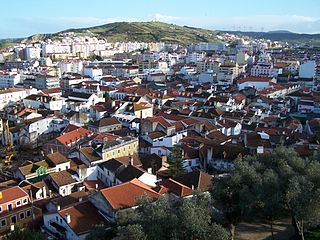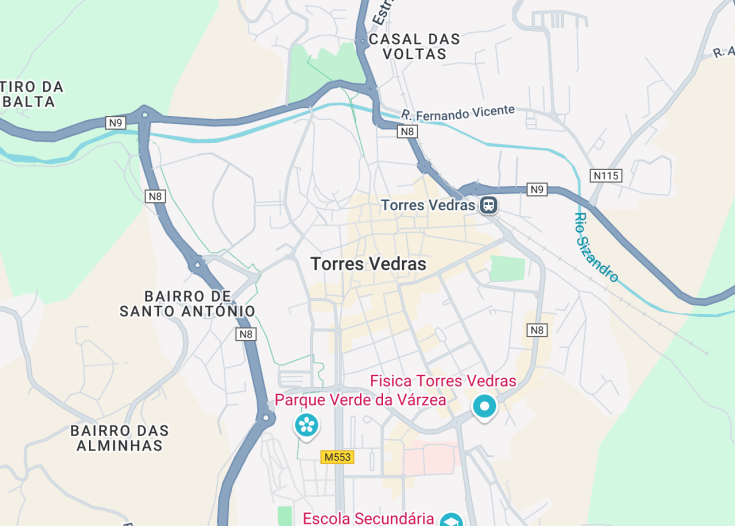Nestled in the lush landscapes of central Portugal, Torres Vedras is a captivating city rich with history and culture. Renowned for its medieval fortresses and vibrant annual carnival, this destination offers a unique glimpse into Portugal’s past intertwined with modern charm.
Visitors can explore ancient ruins, local vineyards, and enjoy the exquisite local cuisine, making Torres Vedras an ideal escape for history buffs and culinary enthusiasts alike.
Before visiting, check the carnival schedule to experience Torres Vedras at its most festive and colorful. It’s a cultural spectacle not to be missed.
Don’t forget to try the region’s famous wines. Visiting a local vineyard can provide context and a deeper appreciation of the area’s winemaking traditions.
Top things to do & see in Torres Vedras
Select the following sights and activities to discover best tickets and tours available in Torres Vedras.
Torres Vedras: A Window to Portugal’s Past and Present
| Country | Portugal |
| Time in Torres Vedras | GMT+0 |
| Language spoken | Portuguese |
| Population | 79,465 (source: INE 2021) |
| Currency | Euro (€, EUR) |
| Airports |
|
Torres Vedras is a captivating town rich with history, located in the central region of Portugal. Famed for its viticulture and historical sites, Torres Vedras is a reflection of the deep heritage and vibrant culture that defines Portugal. The town is known for its historic vineyards which produce wines celebrated both locally and internationally, marking its significance in Portugal’s wine industry.
Moreover, Torres Vedras plays host to the annual Carnival, known as one of the most traditional in Portugal, drawing visitors from all over the country and abroad. The town’s historical significance is punctuated by its well-preserved medieval castle, which stands as a memory of the past conflicts and strategic importance of Torres Vedras. The local architecture and ancient churches are testimonies to the town’s medieval and modern historical phases, appealing to history enthusiasts and travelers alike.
Adding to its allure, Torres Vedras boasts stunning landscapes and a proximity to the Atlantic coast, offering beautiful beach experiences and coastal activities only a short drive away. Along with cultural experiences, such as local cuisine that features seafood and traditional Portuguese dishes, the town provides a holistic view of Portuguese life and tradition.
Where is Torres Vedras?
Torres Vedras is situated in the Lisbon District, approximately 50 kilometers north of Lisbon.
Distances:
| Route | Distance by car | Time by car |
|---|---|---|
| Lisbon to Torres Vedras | 50 km | 40 minutes |
| Porto to Torres Vedras | 313 km | 3 hours |
| Coimbra to Torres Vedras | 187 km | 1 hour 50 minutes |
What is Torres Vedras famous for?
Torres Vedras is renowned for its historical vineyards, producing distinguished wines, and hosts one of Portugal’s most traditional and vibrant Carnivals.
History
Prehistoric Times – Early Middle Ages
The region of Torres Vedras, known today for its rich historical tapestry, saw its earliest human activities traced back to the prehistoric period. Archaeological findings suggest the presence of Neolithic communities engaged in agriculture and hunting. During the Roman era, the area witnessed a surge in development, with the establishment of villas and the integration into Roman trading networks. As the Roman Empire declined, Torres Vedras saw various waves of invasions, including Visigoths and Moors, the latter leaving a discernible influence on local culture and architecture.
12th Century – 16th Century
It was in the 12th century that Torres Vedras began to gain significant importance. Following its reconquest from the Moors by Portuguese forces led by King Afonso Henriques, the town was granted a charter, spurring its development. Torres Vedras became a pivotal defensive point during the medieval period, with the construction of its castle and fortifications, which played crucial defensive roles in subsequent conflicts, including the struggles against Castilian invasions.
19th Century
The most distinguished era in the history of Torres Vedras was during the early 19th century when it was the centerpiece of the Lines of Torres Vedras during the Peninsular War. These were a network of fortifications built secretly to defend Lisbon from Napoleonic troops. Masterminded by the Duke of Wellington, the lines were never breached and played a decisive role in the defeat of Napoleon’s forces in Portugal, shaping European history significantly.
20th Century – Present
In the 20th century, Torres Vedras experienced modernization while preserving its historic heritage. The expansion of agricultural industries, particularly wine production, has significantly contributed to the local and national economy. Today, while embracing modernity, Torres Vedras proudly conserves its historical sites, promoting both tourism and cultural heritage, and maintaining a unique blend of past and present for visitors and residents alike.
Visit Torres Vedras
Attractions and Activities in Torres Vedras
Exploring Torres Vedras offers a captivating glimpse into Portugal’s rich history and vibrant culture. Key attractions include the medieval Castle of Torres Vedras, a historic site offering panoramic views of the town and its surroundings.
The local museums, such as the Municipal Museum of Torres Vedras, present detailed exhibits on the region’s history, including its role in the Peninsular War. For nature enthusiasts, the Serra de Montejunto provides excellent hiking opportunities, while the beaches of Santa Cruz offer relaxation and water activities by the Atlantic Ocean.
- Explore the Torres Vedras Castle
- Visit the Municipal Museum
- Hike in Serra de Montejunto
- Unwind at Santa Cruz Beach
Festivals and Events
Torres Vedras is lively with cultural events throughout the year. The highlight is the annual Carnival of Torres Vedras, celebrated before Lent, reputed to be the most Portuguese of all carnivals.
During summer, the Feira de São Pedro offers funfairs, crafts, and local cuisine, drawing visitors from all over Portugal. The town also hosts various wine festivals, reflecting its prominence in the wine industry, typically held in the fall harvesting season.
Best time to visit Torres Vedras
The ideal time to visit Torres Vedras is between May and September when the weather is warm and sunny, perfect for exploring the historic sites and enjoying the local beaches. Additionally, visiting during the annual Carnival or the Feira de São Pedro can provide a more enriched cultural experience.
Is Torres Vedras worth visiting?
Torres Vedras is undoubtedly worth visiting for those interested in history, culture, and nature. Its well-preserved medieval structures, insightful museums, and vibrant festivals offer a deep dive into Portuguese heritage.
Moreover, the natural landscapes and welcoming local communities provide a peaceful yet enriching visit, making Torres Vedras a compelling destination for travelers seeking both relaxation and cultural immersion.









